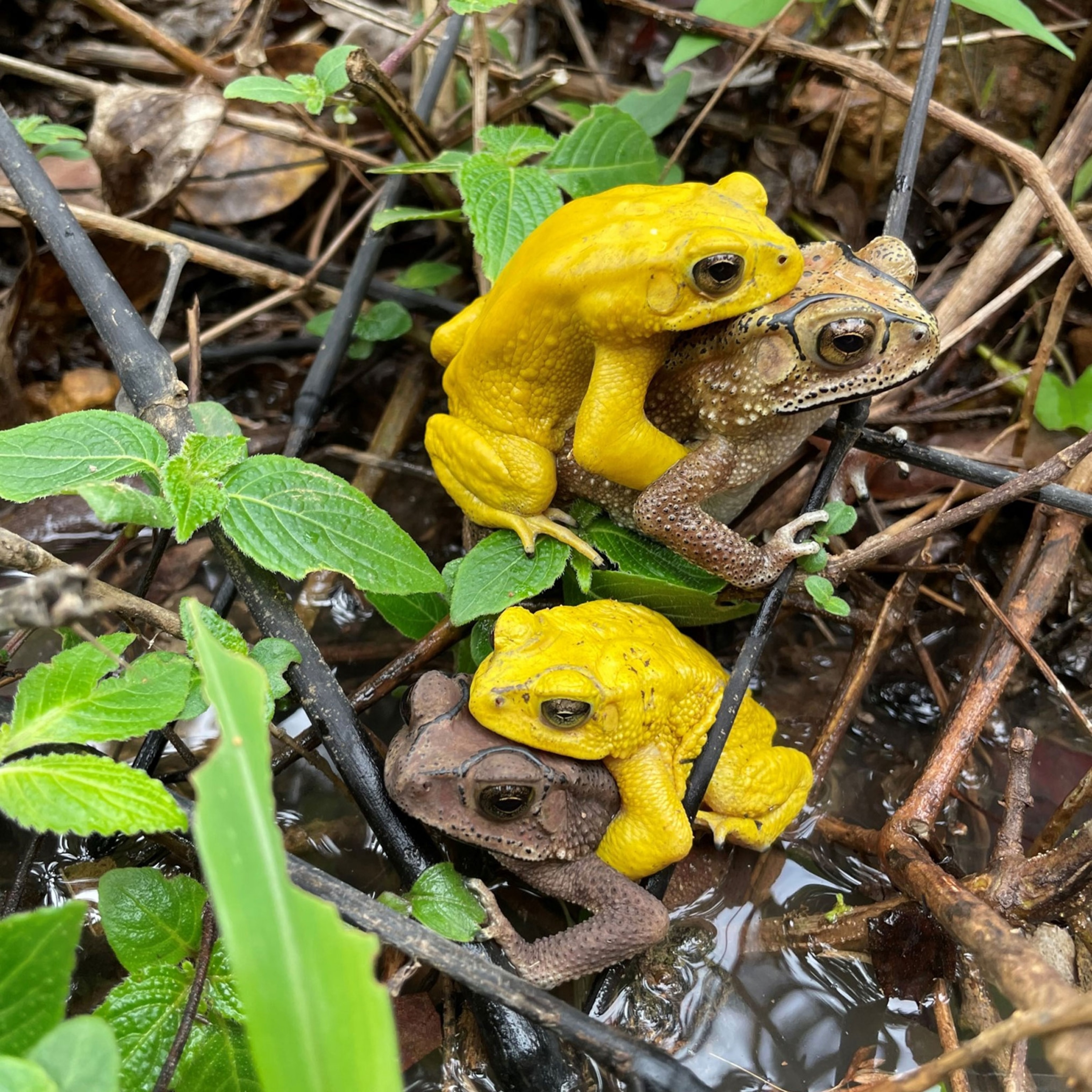
Parasite Creating Deformed Frogs in Western U.S.
Hot spots of "grotesque" infections are shifting, research suggests.
Amphibians with "sick and twisted" deformities continue to be widespread in the western United States, new research says. (See more pictures of the deformed frogs.)
A flatworm parasite called Ribeiroia ondatrae infects several species of frogs just as they're developing their limbs, causing an assortment of defects such as no legs or even multiple legs that jut out at weird angles from the frogs' bodies scientists say.
The deformed frogs are often unable to move and either die or quickly get eaten by predators.
Scientists already knew that the parasite was the culprit in the frog malformations, but the researchers wanted to find out whether known hot spots of Ribeiroia populations in four western states had changed since they were last surveyed in 1999.
So in 2010 Pieter Johnson, an ecologist at the University of Colorado at Boulder, and colleagues gathered data on frogs and parasites in 48 wetlands in California, Oregon, Washington, and Montana.
The scientists found that the parasite infections were still pervasive in amphibians at the study sites.
"We found that, although the distribution of Ribeiroia across wetlands changed, there was little net effect on overall parasite prevalence, with 31 percent of wetlands gaining the parasite and 27 percent losing the parasite," according to the study.
But "what was most intriguing," Johnson said, "was that the locations of hot spots had changed substantially over the last decade."
For instance, ponds where scientists had found few "grotesque" frogs in 1999 now had 30 percent or more frogs with deformed limbs, he said. Likewise, former hot spots now had fewer of the diseased amphibians, according to their results, which are not yet published in a journal.
Because some of the hot spots can house threatened or endangered amphibians, conservationists need to know where the parasite is moving.
Predicting future hot spots by keeping track of environmental factors—for example how land is used—may also help scientists figure out what's happening to amphibian populations.
"These severe malformations—even though it's not in the headline news—these continue to occur in a lot of amphibian populations in the western U.S.," said Johnson, who received funding from the National Geographic Society's Committee for Research and Exploration. (The Society owns National Geographic News.)
Frog Parasite Has Complex Life Cycle
The Ribeiroia parasite has a complex, multihost life cycle, which begins with the ramshorn snail, a creature common to many western U.S wetlands.
The flatworm asexually clones itself inside the snail, stripping the mollusk of its gonads and converting it into a "parasite machine," Johnson said. Each night the snail releases hundreds of free-swimming Ribeiroia larvae, which seek out their next hosts—tadpoles—with "remarkable precision."
(See "'Sex Puppeteers' Force Sex Change, Virgin Birth in Bugs via Genes.")
The parasite larvae penetrate the tadpoles' tissue and zero in on the developing limb buds, so that when a tadpole begins to metamorphose into a frog, its "primary system of locomotion doesn't work—it can't jump, can't swim," he said.
"That's when the birds"—the parasite's final host—"zoom in and eat [the young frogs] up like popcorn."
The parasite then reproduces sexually inside the birds, and when the birds defecate, their feces contain parasite eggs that eventually make their way back into the snails.
Though the Ribeiroia parasite occurs naturally in North America, human activities likely have something to do with its prevalence, Johnson noted.
For instance, the snails feed on algae, and runoff from agriculture and industry into wetlands contains nutrients that act as fertilizer, boosting algae growth. With more snails in the wetlands, the parasites have more initial hosts to infect, Johnson noted.
"As with any emerging disease issue, a lot of it is about what's underlying the change in parasite abundance," he said.
"I don't think this story is just about frogs."
Habitat Loss Mostly to Blame for Frog Declines
The scientists did not specifically measure how many frog populations at the study sites had declined—"though it's high on our priority list," Johnson noted.
Overall, though, amphibian populations will fluctuate widely from year to year, said Erin Muths, a zoologist at the U.S. Geological Survey in Fort Collins, Colorado.
Those fluctuations are usually based on an unpredictable resource: water. For instance, sometimes ponds dry up, killing any frog eggs.
"This variability makes it difficult to tell whether we are looking at a real decline" in frogs—for example, due to parasites—"or just a blip in a crazy up-and-down pattern that is normal," she said.
"This distinction is important so that we can target amphibian populations that are really in trouble, rather than a population that is just having a bad year."
That's also why the new research is solid, she said—it "has that long-term aspect and contributes to our understanding of amphibian decline."
(Read about vanishing amphibians in National Geographic magazine.)
Unraveling the complexities of frogs' downward spiral is no easy task, especially when the causes are as diverse as pesticides, parasites, and diseases such as the chytrid fungus, she added.
(Related: "Deadly Frog Fungus Spreads in Virus-Like Waves.")
Overall, habitat loss is overwhelmingly to blame for frogs' disappearance globally, Muths said, although the issue is a harder one to bring to the public eye.
Disease is "the sexy one that gets all the coverage—habitat loss is not in vogue," she said.
"But if you look at all the things that are piling up on amphibians, if you don't have a house to live in, it doesn't matter if you're going to die tomorrow because of a disease."








